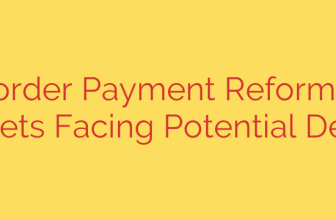
Navigating PCI DSS 4.0: How AI is Revolutionizing JavaScript Security
The deadline for transitioning to the Payment Card Industry Data Security Standard (PCI DSS) v4.0 is fast approaching, and organizations are grappling with its new, more stringent requirements. Among the most significant challenges are the new rules focused on client-side security, specifically designed to combat digital skimming attacks like Magecart.
Two requirements, in particular, are proving difficult for security and compliance teams: Requirement 6.4.3 and Requirement 11.6.1. These mandates force businesses to gain complete control over the JavaScript running on their payment pages. For modern e-commerce sites that rely on dozens of third-party scripts for analytics, marketing, and functionality, this is a monumental task.
Fortunately, artificial intelligence is emerging as a powerful ally, transforming a complex, manual process into a streamlined, automated one.
The Core Challenge: Understanding Your Client-Side Attack Surface
Before diving into the solution, it’s crucial to understand the problem these new requirements solve. Malicious actors frequently target e-commerce payment pages by injecting unauthorized code into legitimate third-party scripts. This code then secretly skims customer payment information, leading to data breaches, financial loss, and severe reputational damage.
PCI DSS v4.0 directly addresses this threat with two key mandates:
- Requirement 6.4.3: This rule requires organizations to maintain a complete inventory of all JavaScript loaded on payment pages. More than just a list, you must authorize each script and provide a clear justification for why it is necessary for the payment page to function. Any unauthorized script must be blocked.
- Requirement 11.6.1: This requirement mandates a change-detection mechanism to alert personnel to any unauthorized modifications to HTTP headers or the content of payment pages. This ensures that even if a script was initially approved, any malicious changes are caught in real-time.
Manually fulfilling these requirements is nearly impossible. A security analyst would have to spend hours, or even days, meticulously analyzing each script’s code to understand its purpose and justify its presence—a process that must be repeated every time a script is updated.
How AI Simplifies and Accelerates Compliance
This is where AI-powered security tools are changing the game. By leveraging advanced machine learning models, these platforms can automate the most time-consuming aspects of PCI DSS client-side compliance.
1. Automated Script Inventory and Analysis
Instead of manually hunting down every piece of JavaScript, AI-driven solutions can instantly scan your payment pages and generate a comprehensive inventory. But they go a step further than simple discovery. These tools can analyze the behavior of each script, automatically identifying its function and purpose.
For example, an AI assistant can instantly tell you:
- This script is from Google Analytics and is used for tracking user behavior.
- This script powers the customer support live chat widget.
- This script is part of the payment gateway’s fraud detection system.
2. Instant, Plain-English Justifications
One of the biggest hurdles in Requirement 6.4.3 is creating a written justification for each script. This is especially difficult for compliance teams who may not have deep technical expertise in JavaScript.
AI eliminates this barrier by translating complex code into clear, human-readable explanations. An AI security assistant can generate a concise summary explaining what a script does and why it is present on the page. This auto-generated justification provides the exact documentation needed for PCI DSS audits, reducing the analysis time from days to mere minutes.
3. Streamlining the Authorization Workflow
With a clear inventory and automated justifications, security teams can rapidly move through the authorization process. They no longer have to guess at a script’s purpose. Instead, they are presented with clear data, allowing them to confidently approve necessary scripts and investigate or block any that are unknown or unjustified. This creates a robust, auditable workflow that directly satisfies PCI DSS requirements.
Actionable Steps to Secure Your Payment Pages
Meeting the new PCI DSS v4.0 standards is non-negotiable for any organization that handles cardholder data. Here are actionable steps you can take to enhance your client-side security posture:
- Gain Full Visibility: You cannot protect what you cannot see. The first step is to use a tool that provides a complete, real-time inventory of every first-party and third-party script running in your web environment.
- Establish a Baseline: Once you have an inventory, analyze and justify the purpose of each script to create an authorized baseline. This is the foundation for meeting Requirement 6.4.3.
- Implement Real-Time Monitoring: Deploy a client-side security solution that continuously monitors for changes, as required by 11.6.1. This system should provide instant alerts on any new scripts, code modifications, or suspicious data transmission.
- Leverage Automation and AI: Recognize that manual methods are no longer sufficient. Embrace automated tools that use AI to simplify script analysis, justification, and threat detection. This not only ensures compliance but also frees up your security team to focus on higher-level strategic initiatives.
Ultimately, protecting your payment pages is not just about checking a compliance box—it’s about safeguarding your customers and your business. By integrating AI-powered solutions into your security strategy, you can effectively meet the rigorous demands of PCI DSS v4.0 and build a more resilient defense against ever-evolving client-side threats.
Source: https://www.helpnetsecurity.com/2025/10/15/jscrambler-pci-dss-ai-assistant/








